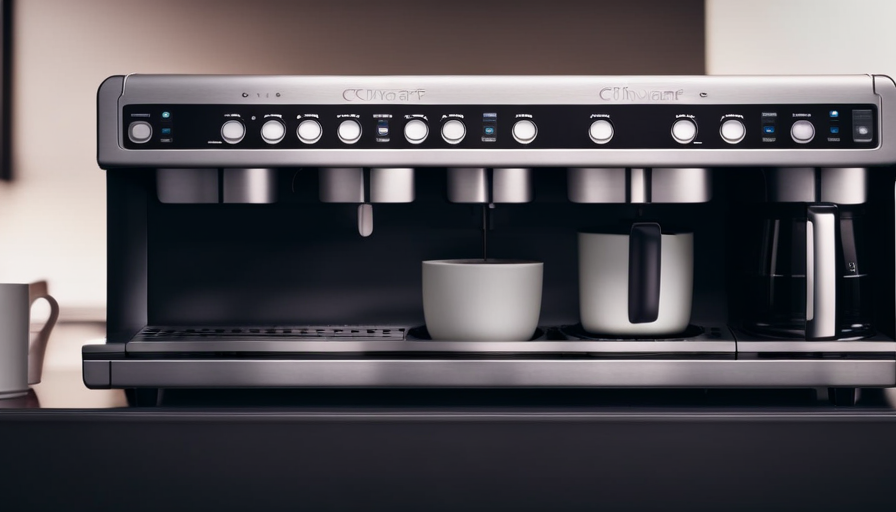Oh, the perpetual challenge of food preservation! It’s akin to a round of musical chairs, except in this case, it involves shelves in the refrigerator. Particularly with raw food, the risks are significant. You certainly wouldn’t want to gamble with bacteria and potential foodborne illnesses, would you? Absolutely not, that’s a dance you’d rather avoid.
So, where exactly should raw food be stored in the fridge? Well, my dear reader, let me be your food safety specialist and guide you through the steps.
Picture this: the bottom shelf is your dance floor for raw meat. It’s where it belongs, away from everything else.
Raw seafood? It needs its own private VIP section, separate from other foods.
And when it comes to raw poultry, seal it up tight in a container, because you don’t want any cross-contamination drama.
Oh, and let’s not forget about raw fruits and veggies. They may not have moves like Jagger, but they still need their own space. Crisper drawers are their stage, where they can shine and stay fresh.
And don’t forget to label and date your containers, so you can keep track of their encore performances.
Now, my friends, that’s the rhythm and flow of proper raw food storage in the fridge. So let’s waltz our way to food safety and keep those unwanted bacteria off the dance floor. Shall we?
Key Takeaways
- Raw food should be stored in the coldest part of the fridge, typically on the bottom shelf or in the meat drawer.
- Raw meat should be stored on the bottom shelf to prevent drippings from contaminating other foods.
- Raw seafood should be stored separately from other foods to minimize the risk of bacteria spreading.
- Raw poultry should be stored in sealed containers on the bottom shelf to prevent cross-contamination.
Importance of Proper Food Storage
You need to know where to store raw food in your fridge to ensure its freshness and prevent any potential contamination. As a food safety specialist, I can provide clear and detailed instructions on the specific location within the fridge where raw food should be stored.
Proper temperature control is essential to maintaining food safety. Raw food should be stored in the coldest part of the fridge, typically on the bottom shelf or in the meat drawer. This helps to prevent the growth of bacteria that can cause foodborne illnesses.
Improper food storage can have a significant impact on food safety. If raw food is stored in an area that is too warm, bacteria can multiply rapidly, increasing the risk of foodborne illnesses. Additionally, if raw food comes into contact with cooked or ready-to-eat foods, cross-contamination can occur, leading to potential foodborne illnesses as well.
Understanding the risks of cross-contamination is crucial. Raw meats, seafood, and poultry should always be stored separately from other foods to prevent any contact and transfer of bacteria. By following these guidelines and storing raw food properly in your fridge, you can ensure the freshness and safety of your food.
Understanding the Risks of Cross-Contamination
To prevent the spread of harmful bacteria, it’s crucial to store fresh ingredients separately in order to avoid any potential cross-contamination risks. When it comes to proper food storage, understanding the risks of cross-contamination is essential.
Cross-contamination occurs when bacteria from one food item are transferred to another, potentially leading to foodborne illnesses. To ensure safe storage, a food safety specialist or food storage expert would provide clear and detailed instructions on the specific location within the fridge where raw food should be stored.
To help you enjoy the information, here are four key points to consider:
-
Raw meat, poultry, and seafood should be stored on the bottom shelf to prevent their juices from dripping onto other foods.
-
Use separate containers or bags to store raw and cooked foods.
-
Keep raw fruits and vegetables separate from raw meats to avoid any potential contamination.
-
Clean and sanitize any surface or utensil that comes into contact with raw food to prevent the spread of bacteria.
Following these guidelines will help minimize the risks of cross-contamination and ensure the safety of your food. Now, let’s move on to the next section about storing raw meat on the bottom shelf.
Store Raw Meat on the Bottom Shelf
Placing raw meat on the lowest shelf helps prevent any potential drippings from contaminating other items in the refrigerator. To ensure proper fridge organization and minimize the risk of cross-contamination, it is crucial to store raw meat in a specific location. As a food safety specialist, I recommend storing raw meat on the bottom shelf of the fridge, preferably in a leak-proof container or sealed plastic bag. This prevents any accidental spills or drippings from coming into contact with ready-to-eat foods or fresh produce stored on higher shelves.
To further enhance the organization and efficiency of raw meat storage, I suggest using a table to visually represent the ideal fridge organization. This table provides a clear and concise guide for proper placement of raw meat, helping users understand the importance of separating raw and cooked foods to maintain food safety.
| Shelf | Items |
|---|---|
| Top Shelf | Leftovers, cooked meats, ready-to-eat foods |
| Middle Shelf | Dairy products, eggs, condiments |
| Bottom Shelf | Raw meat, poultry, fish |
| Crisper Drawers | Fruits, vegetables |
By following this organization method, you can prevent the risk of cross-contamination and ensure the freshness and safety of your food. Proper fridge organization is essential to maintain food quality and prevent spoilage.
Transitioning to the next section about keeping raw seafood separate from other foods, it is important to note that similar principles apply to the storage of raw seafood.
Keep Raw Seafood Separate from Other Foods
When it comes to keeping your seafood fresh and safe, it’s crucial to separate it from other items in your refrigerator. Proper storage of raw seafood is essential to prevent cross-contamination and maintain food freshness.
To ensure this, it is recommended to store raw fish away from cooked dishes or ready-to-eat foods. This helps to minimize the risk of harmful bacteria spreading from the raw seafood to other items in the fridge.
A food safety specialist or food storage expert would advise storing raw seafood on a bottom shelf or in a designated section of the refrigerator. This helps to prevent any potential leakage or drippings from contaminating other foods. Additionally, maintaining a temperature range of 32°F to 38°F (0°C to 3°C) is ideal for storing raw seafood, as it slows down bacterial growth.
Proper storage of raw seafood is crucial to prevent spoilage and foodborne illnesses. By following these guidelines, you can ensure that your seafood stays fresh and safe for consumption.
Now, let’s move on to the next step, which is using sealed containers for raw poultry.
Use Sealed Containers for Raw Poultry
Make sure you seal your containers tightly to keep your chicken fresh and prevent any potential contamination.
Proper storage techniques are crucial for maintaining the quality and safety of raw poultry. To prevent cross-contamination, it’s important to store raw poultry in sealed containers on the bottom shelf of the refrigerator. This location ensures that any potential drips or leaks from the poultry don’t come into contact with other foods, reducing the risk of bacterial growth and foodborne illnesses.
Additionally, storing raw poultry on the bottom shelf prevents it from dripping onto foods that won’t be cooked, like ready-to-eat items such as fruits and vegetables.
The ideal temperature range for storing raw poultry is between 32°F and 40°F (0°C and 4°C). This helps slow down bacterial growth and maintain the freshness of the chicken.
By following these proper storage techniques, you can prevent cross-contamination and ensure the safety of your raw poultry.
Now, let’s move on to the next section about storing raw dairy products in the coldest part of the fridge.
Store Raw Dairy Products in the Coldest Part of the Fridge
The coldest part of the fridge is the best spot to store raw dairy products to ensure their freshness and prevent bacterial growth. As a food safety specialist, I understand the importance of proper storage to maintain the quality and safety of raw dairy.
Raw dairy products, such as milk, yogurt, and cheese, should be stored at a temperature between 32°F and 40°F (0°C and 4°C). This specific temperature range helps to slow down the growth of bacteria and prevent spoilage.
When storing raw dairy, it’s crucial to keep it in sealed containers to minimize the risk of cross-contamination. This means keeping raw dairy separate from other raw foods, such as raw poultry, to avoid the transfer of harmful bacteria.
By storing raw dairy in the coldest part of the fridge, you can ensure that it stays fresh and safe to consume.
Now, let’s move on to the next step: keeping raw fruits and vegetables separate from raw meat. This is another important aspect of food safety to prevent the spread of bacteria and maintain the quality of your food.
Keep Raw Fruits and Vegetables Separate from Raw Meat
When it comes to storing raw food in the fridge, it’s crucial to follow proper guidelines to ensure food safety and prevent cross-contamination. In my experience as a food safety specialist, I highly recommend keeping raw fruits and vegetables separate from raw meat. This is because raw meat can contain harmful bacteria that may contaminate produce, leading to potential foodborne illnesses.
To prevent cross-contamination in the fridge, follow these raw meat storage tips:
- Store raw meat in sealed containers or leak-proof bags to prevent any juices from dripping onto other foods.nn2. Place raw meat on the bottom shelf of the fridge to prevent it from accidentally coming into contact with other foods.nn3. Clean and sanitize any surfaces or utensils that come into contact with raw meat to avoid spreading bacteria.
By following these guidelines, you can significantly reduce the risk of cross-contamination and keep your raw food safe to consume.
In the next section, I will discuss the importance of utilizing crisper drawers for storing raw produce, ensuring optimal freshness and preventing spoilage.
Utilize Crisper Drawers for Raw Produce
To keep your fruits and vegetables as fresh as a crisp morning breeze, harness the power of crisper drawers in your refrigerator. These specialized compartments are designed to maximize freshness and preserve nutrients by providing an ideal environment for raw produce. When it comes to storing raw food, utilizing crisper drawers is a food safety best practice that ensures optimal freshness and minimizes the risk of cross-contamination.
Here is a table that highlights the benefits of utilizing crisper drawers for storing raw produce:
| Benefits of Crisper Drawers |
|---|
| Maintains optimal humidity levels |
| Prevents ethylene gas buildup |
| Minimizes cross-contamination risks |
By maintaining the right humidity levels, crisper drawers create an environment that slows down the deterioration process, helping your fruits and vegetables retain their crispness and nutrients. Additionally, these drawers are designed to prevent ethylene gas buildup, which can accelerate the ripening and spoilage of produce.
Properly storing raw food in crisper drawers is key to preserving its freshness and maximizing its shelf life. However, it is also important to label and date raw food containers for easy identification. This ensures that you can quickly identify and use the oldest items first, reducing food waste and maintaining food safety.
Label and Date Raw Food Containers for Easy Identification
Labeling and dating containers of raw produce is a simple yet effective way to ensure easy identification and reduce the risk of consuming expired items. When storing raw food in the fridge, it’s essential to label each container with the type of produce and the date it was stored.
This practice not only helps in keeping track of the freshness of the food but also aids in organizing the fridge efficiently. By clearly labeling containers, it becomes easier to locate specific items when needed, saving time and reducing food waste. Additionally, labeling benefits extend beyond organization. It serves as a reminder to consume the oldest produce first, preventing any items from going bad.
A food safety specialist or storage expert would emphasize the importance of proper labeling and provide precise instructions on where to place the containers within the fridge. They would recommend storing raw food on lower shelves to prevent any potential cross-contamination with ready-to-eat items. It’s crucial to maintain a temperature range of 32-40°F (0-4°C) to inhibit bacterial growth and keep the raw produce fresh.
Labeling and dating raw food containers is a crucial step in maintaining food safety and organization in the fridge. By following these organizing tips, you can easily identify and consume your produce before it reaches its expiration date. Regularly cleaning and sanitizing your fridge to prevent bacterial growth is the next important step in ensuring the freshness and safety of your food.
Regularly Clean and Sanitize Your Fridge to Prevent Bacterial Growth
Regularly cleaning and sanitizing your refrigerator is essential for preventing bacteria from growing and keeping your food fresh and safe. As a food safety specialist, I can provide clear and detailed instructions on the specific location within the fridge where raw food should be stored.
To maintain food safety, it’s crucial to store raw food on the bottom shelf of the refrigerator. This helps prevent any potential cross-contamination with ready-to-eat foods. It’s important to keep raw food separate from other items, especially foods that’ll be consumed without further cooking.
Additionally, maintaining the proper temperature range is vital. The ideal temperature for storing raw food in the refrigerator is between 32°F and 40°F (0°C and 4°C). This temperature range inhibits bacterial growth and helps preserve the quality and freshness of the food.
To ensure the effectiveness of cleaning, it’s recommended to clean and sanitize your refrigerator at least once a month. This includes removing all food items, shelves, and drawers, and washing them thoroughly with warm soapy water. Pay special attention to any spills or residues that may have occurred from raw food to prevent bacterial contamination.
By following these proper storage techniques and regular cleaning frequency, you can maintain a safe and healthy environment for your food and prevent any potential foodborne illnesses.
Frequently Asked Questions
Can raw fruits and vegetables be stored together in the fridge?
Yes, raw fruits and vegetables can be stored together in the fridge. However, it’s important to store them in sealed containers to prevent cross-contamination. When stored properly, raw fruits and vegetables can last for several days in the fridge. It’s recommended to keep them at a temperature between 32°F and 40°F to maintain freshness and prevent spoilage. Proper storage is essential to ensure food safety and maintain the quality of the produce.
Should raw seafood be stored in the same container as other raw meats?
Raw seafood should not be stored in the same container as other raw meats due to the risk of cross-contamination. It is important to keep seafood separate from other meats to prevent the spread of harmful bacteria.
To minimize these risks, store raw seafood in a separate container on the bottom shelf of the refrigerator. This location helps to prevent any potential leakage or drippings from contaminating other foods and ensures proper storage temperature.
How long can raw poultry be stored in sealed containers?
Raw poultry can be stored in sealed containers for up to 2 days in the refrigerator. To ensure food safety, it’s important to store raw poultry in the coldest part of the refrigerator, typically on the bottom shelf. This helps prevent cross-contamination with other foods and minimizes the risk of bacteria growth. Remember to keep the poultry in its original packaging or place it in a leak-proof container to prevent any juices from dripping onto other foods.
Is it necessary to store raw dairy products in the coldest part of the fridge?
When it comes to raw dairy storage, it’s important to store these products in the coldest part of the fridge. This ensures that the dairy remains at a safe temperature to prevent bacterial growth and maintain freshness. Storing raw dairy in the coldest section of the fridge also helps to minimize the risk of cross-contamination with other foods.
By following these guidelines, you can ensure the safety and quality of your raw dairy products.
How often should I clean and sanitize my fridge to prevent bacterial growth?
To properly organize your fridge and prevent cross-contamination, follow these tips. First, store raw food on the bottom shelf to prevent any potential dripping onto other foods. Keep raw meat and seafood in sealed containers to avoid contact with other items. Additionally, designate specific areas for different food categories to prevent contamination.
To effectively clean and sanitize your fridge, remove all items, discard expired products, and wipe down surfaces with a mixture of warm water and mild detergent. Regularly repeat this process every 1-3 months to prevent bacterial growth.
Where should raw food be stored in the fridge for safety?
Raw feeding food should be stored in the fridge in a designated location to ensure safety. Ideally, it should be kept on the bottom shelf to prevent drips or spills from contaminating other food items. This also minimizes the risk of cross-contamination with ready-to-eat foods.
Conclusion
As a food safety specialist, I can confidently say that raw food should be stored in the coldest part of the fridge, which is the bottom shelf. This ensures that any potential bacteria or pathogens from the raw food don’t drip onto other foods and cause cross-contamination.
It’s important to use sealed containers for raw poultry and keep raw seafood separate from other foods to prevent any spread of bacteria. Additionally, utilizing the crisper drawers for raw produce helps maintain their freshness.
Remember to label and date raw food containers for easy identification and regularly clean and sanitize your fridge to prevent bacterial growth.
Stay safe and enjoy your fresh and delicious meals!










